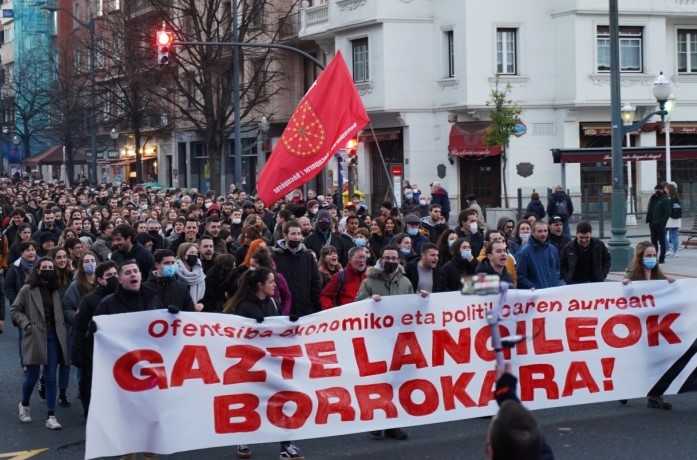The rapid emergence of the Socialist Movement (MS) in various parts of the Spanish state (Basque Country, Catalonia, Valencia, Aragon, Castile and Madrid) is a fact to be celebrated by other communists in Spain and internationally. In underlining this important fact, the International Marxist Tendency (IMT) wishes to establish a dialogue and a fraternal exchange of views with the comrades of the MS, in order to clarify the tasks and tactics that lie ahead for the communist movement.
[Originally published in Spanish at luchadeclases.org]
The Socialist Movement is the name in common under which various communist organisations have grouped. All of these groups are fundamentally of a youthful character and have emerged relatively recently, and include: the Mugimendu Sozialista in the Basque Country, Horitzó Socialista in Catalonia, Purna in Aragón and Espacio por el Proceso Socialista in areas of Castile and Madrid.
It is a breath of fresh air and hope in the stale and stagnant atmosphere of the ‘alternative’ left across the Spanish state, which has ended up accepting the status quo, and integrating into the system, which it proposes to merely patch up – if the system kindly allows them to do so.
The Socialist Movement is also a categorical answer to the impasse into which the pro-independence Left in the Basque Country and Catalonia has led the movement for national emancipation in these territories. Through it, thousands of young people had sought a militant space where they might attempt to combine national liberation with social liberation. But unable to consistently confront the Spanish capitalist state, the leaders of the pro-independence Left also ended up accepting the status quo in practice. They have been content to pursue a strategy of propping up the ‘progressive’ PSOE-Unidas Podemos government at any price.
And last but not least, this new communist movement emerges as an alternative to the myriad of Stalinist groups and sects that swarm all over Spain, with their Spanish nationalist narrowness and ‘national’ road to socialism. In general, they defend the crudest ‘workerism’, which scorns the democratic demands of other oppressed groups within the working class (by sex, gender, ethnicity, nationality, etc.). They thus find themselve participating in an undeclared united front with the postmodernist left in fomenting division within our class.
The Socialist Movement declares unequivocally that its goal is international communism and calls for the unification and organisation of a global communist movement. And it places the working class as the motor and axis of the struggle for this goal. The comrades also insist, correctly, on the need for the political independence of the proletariat. This objective and the central role of the working class in the struggle for communism fully coincide with our perspectives and strategy in the International Marxist Tendency (IMT). This has been the fundamental tenet of modern communism since its foundation more than 150 years ago.
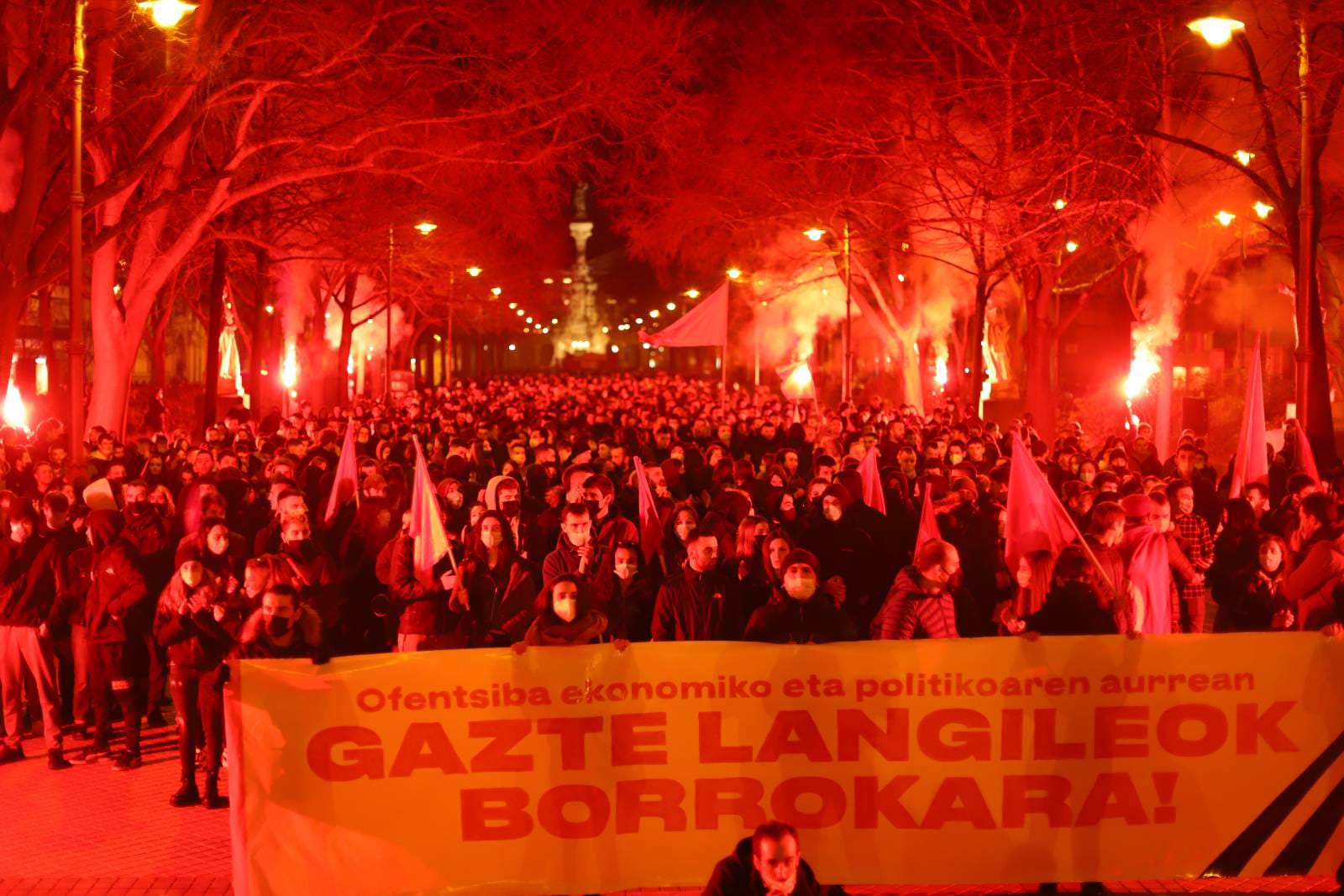 The comrades of the Mugimendu Sozialista in the Basque Country have particularly demonstrated an impressive capacity for organisation and mobilisation / Image: GKS
The comrades of the Mugimendu Sozialista in the Basque Country have particularly demonstrated an impressive capacity for organisation and mobilisation / Image: GKS
The comrades of the Mugimendu Sozialista in the Basque Country have particularly demonstrated an impressive capacity for organisation and mobilisation, hosting events of all kinds (demonstrations, schools, activities and militant actions) with the active participation of thousands of young communists. The comrades of Horitzó Socialista have also emerged as a force to be reckoned with, having won over to an internationalist communist position a significant part of the rank and file of the pro-independence youth organisation Arran, in Catalonia and Valencia.
More modestly, the comrades of Purna and the Encuentro por el Proceso Socialista (EPS) are also beginning to appear as points of reference, proof of which was EPS’ excellent public meeting on 8 October 2022 in Madrid, attended by 250 participants.
The Socialist Movement has embarked on a courageous campaign of opposition to the social-democratic policies of Unidas Podemos and the pro-independence Left. The latter base their political activity on trying to achieve partial reforms through bourgeois institutions (parliaments, town councils, etc.) as an end in itself. They do this without questioning the class domination of the capitalist class, Spanish or nationalist, and when they fail to achieve such reforms, they shrug their shoulders and accept the cuts in social spending and the attacks on democratic rights imposed by the system.
The comrades of the MS are absolutely right when they say that in the present phase of organic crisis of the capitalist system, there is no room for meaningful and lasting reforms for the working class. This negates the very raison d'être of social democracy, turning it into a collaborator in carrying out the bourgeoisie’s policies against working-class families. Only through the socialist transformation of society, in which the means of production will be collectively owned and democratically controlled by the working class, can humanity solve those problems that are rendered insoluble by capitalism in its present phase of terminal decline.
The MS has also drawn a line under the so-called ‘movementist’ theories and methods, of the asambleario and anarchist type, which consider the ‘struggle’ to be an end in itself. They are merely kinds of ‘reformism’ turned inside out. They lack any political perspective of global transformation, and limit themselves to merely ‘local’ changes and activity. They dissever partial struggles from the broader struggle against the system, and they neither build a political movement nor raise the level of consciousness of their participants. The MS correctly understands the struggle for reforms as an inseparable part of a broader struggle for socialism.
The need for dialogue
The MS has published a number of texts and has carried out many public activities in which its members have defended their most relevant views on a number of important issues: theory, tactics, organisation of the movement, the phases of the struggle for communism, and the abolition of class society. All this is very important and should be of interest to every communist militant.
The IMT takes the activity and positions of the MS very seriously, and we wish to engage in a dialogue with your movement. We wish to highlight those questions on which we fundamentally agree, and bring attention to those positions where we have different views in order to establish a healthy debate and exchange of ideas in order to clarify them.
That is why we are initiating a series of articles in which we would like to address very important issues where we see certain differences between our two organisations in relation to theory, strategy and tactics. Among others, these include: our balance sheet of the USSR and the reasons for its collapse, our strategies for the seizure of power by the working class and the achievement of socialism, the communist approach to the struggle for reforms, and what ought to be the character of a mass communist party. We will devote an article to each of these aspects over the coming period, beginning with the first of these points.
We would like to make it clear that in drawing up our critique of certain positions of the Socialist Movement we have mainly taken as our basis texts from Horitzó Socialista (HS) and Espacio por un Proceso Socialista (EPS), because they seemed to us to express the general positions of the Socialist Movement most clearly. However, we understand that both are very new organisations, and it is wholly possible that their positions are still in the process of development. Furthermore, it is not necessarily the case that all the organisations that make up the Socialist Movement in the Spanish state defend exactly the same positions in every regard.
The fall of the USSR and the ‘state of global defeat’
The following is the first of a series of articles devoted to analysing certain theoretical and strategic positions of the Socialist Movement. In our opinion, a clear and scientific understanding of the significance of the USSR and the reasons for its demise and fall are key for communists to correctly orient ourselves given the tasks before us.
The ‘state of global defeat’ and the ‘seizure of the state’
The comrades of Espacio por el Proceso Socialista (EPS), who form a constituent part of the Socialist Movement (MS) at the level of the Spanish state, recently wrote an article summarising the fundamentals of their positions in terms of strategy and the theoretical basis of their activities – positions which are held in common by MS across the Spanish state. We refer to: Sobre medios y fines. Reflexiones para el momento político.
To begin with, the article by the comrades of EPS states:
“For the construction of such a [socialist] alternative, it is necessary to carry out a theoretical and practical recomposition of socialism. This recomposition, which starts from the definitive closure of the past revolutionary cycle and the failure of the various socialist expressions and proposals that emerged within it, has as its first objective to emerge from a state of global defeat in which we have been plunged for several decades, which has led to socialism being completely alien and little desired by the vast majority of the working class.” [Emphasis in original.]
We do not share the somewhat gloomy tone of the comrades regarding the general situation – in reality, we are entering a stormy period of class struggle, which will open up innumerable revolutionary opportunities, and in which communist ideas are beginning to have an appeal among growing layers of the youth in many countries. However, we wish to focus on the conclusions that seem to derive from what they call a “state of global defeat”.
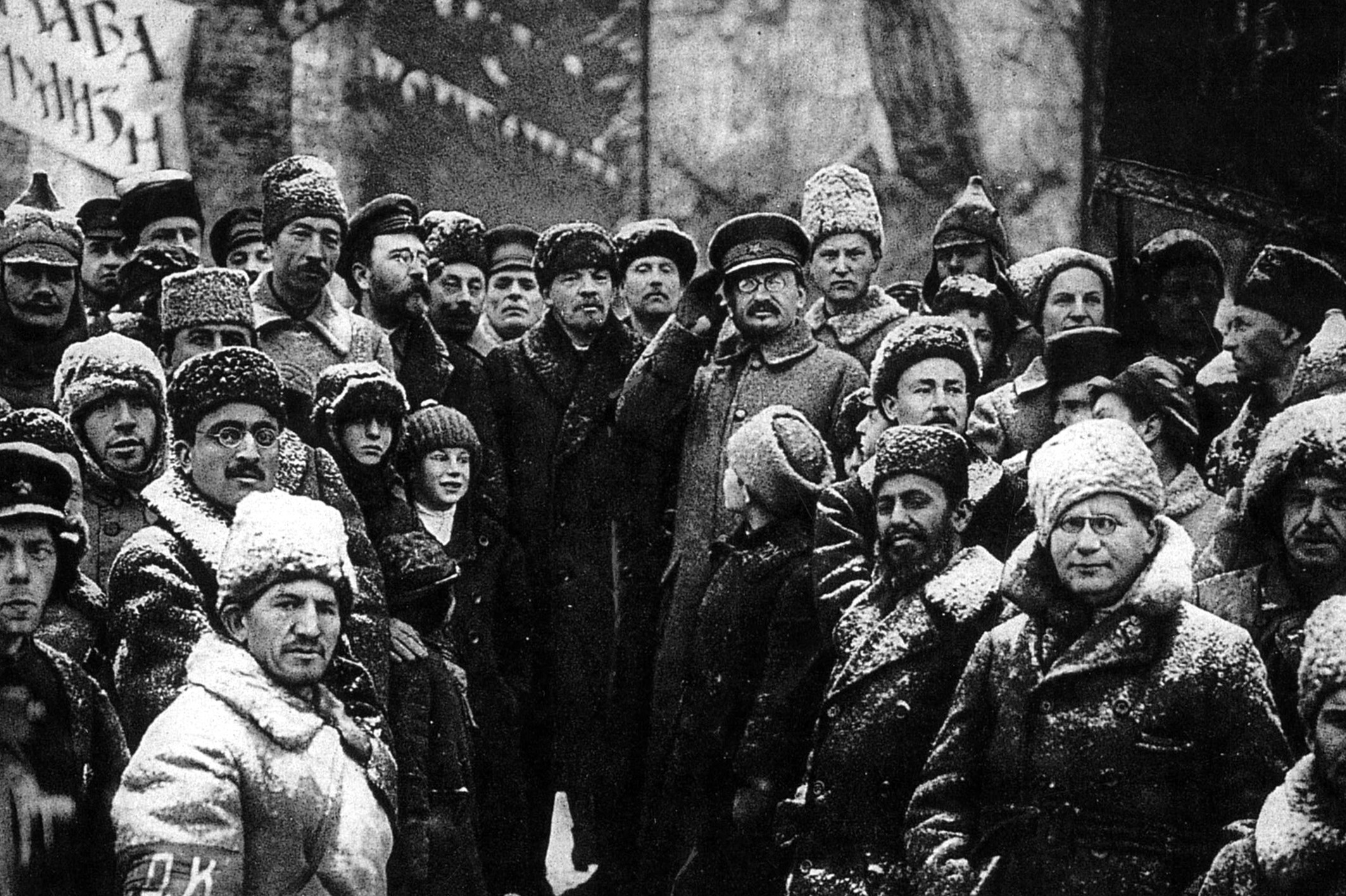 It is significant that the comrades of the MS do not begin with an analysis or historical balance sheet of what happened in the USSR / Image: public domain
It is significant that the comrades of the MS do not begin with an analysis or historical balance sheet of what happened in the USSR / Image: public domain
With this term, the comrades seem to refer, on the one hand, to the demise of the USSR and other deformed workers’ states of the former Eastern bloc established after the Second World War; and, on the other hand, to the incontrovertible fact that the ideas of revolutionary Marxism and communism still represent a small minority on the Left globally. From this point of departure, the comrades seem to deduce that a revision or updating of revolutionary theory and of the means of fighting for communism are necessary (“a theoretical and practical recomposition of socialism”). This suggests that this defeat is explicable by a flaw in the theory itself, or a misapplication of the theory.
It is significant that, in drawing this conclusion in their various writings, the comrades of the MS do not begin with an analysis or historical balance sheet of what happened in the USSR, nor of the Russian Revolution itself, nor of the evolution of the Communist International. In fact, we cannot find – or have not been able to find – any such analysis in the writings published on their websites.
The correctness of an idea or theory, its correspondence with reality, can only be verified in practice. And, given this fact, it is not enough to deal only with the superficially given facts (the fact that the USSR no longer exists, for instance). Rather, it is necessary to conscientiously study the motor forces leading to the given outcome.
The only remote reference to be found in the material of the MS relating to the possible causes of the USSR’s collapse, is the former’s rejection of what they refer to as the “assault” or “insurrectionary seizure of the state” – a point which we will deal with later. From this, one could draw the conclusion that the evils that ruined the development of the USSR and communism flowed from the insurrectionary seizure of power by the Russian working class under the leadership of the Bolshevik Party, which the MS understands as the “seizure of the state”.
It is thus supposed that, the state being an instrument of domination over the oppressed classes, that it absorbed the leading nucleus of the Bolshevik Party following the Russian Revolution of 1917, turning the latter against the oppressed classes, reproducing a dynamic of oppression and establishing a failed regime that ultimately collapsed.
The problem with this analysis is that, on the one hand, it leaves aside the Marxist theory of the proletarian revolution and of the state as formulated by Marx, Engels and Lenin. On the other hand, and more importantly, it overlooks the concrete historical events that took place.
An attentive study of the character of the Russian Revolution and of the history of the USSR has an important place in our debate with the comrades of the MS. This is because it is from the conclusions that they draw from these experiences, which we consider to be incorrect, that they have erected the precepts of their socialist strategy. Hence the relevance we attach to this question in this contribution, and to which we devote this first part of our debate with the comrades.
How did the Russian Revolution of 1917 triumph?
In the first instance, we must point out that the Bolshevik Party never seized control of the Russian state. In the same way, capitalist propaganda is also false when it states that the October Revolution of 1917 consisted of a ‘coup d'état’ or a ‘putsch’ carried out by the Bolshevik leaders.
The Russian Revolution was the most democratic revolution in history. It lasted 9 months, from February to October 1917, in which period there existed a situation of ‘dual power’. On one side you had the official power of the bourgeoisie in alliance with the landed aristocracy, represented by the provisional government, which was established at the start of March 1917. At its disposal it had an arsenal of judges, state administrators, police and army officers. On the other side, you had the workers’ power, represented by the ‘soviets’: councils of workers’ delegates that emerged in the course of the revolution, which were elected directly in the factories, the workers’ quarters, and even in the villages and soldiers’ barracks.
The mass of workers and peasants followed and supported the power represented by the soviets. The Bolsheviks managed to achieve a crushing majority in the soviets across Russia by October 1917, through democratic votes in every factory, neighbourhood, village and soldiers’ committee. The seizure of power itself on 25 October (or 7 November, in the modern Gregorian calendar) was voted on and approved overwhelmingly at the Second All-Russian Congress of Soviets by hundreds of delegates representing millions of workers and peasants.
Had they not acted in such a way and seized power, the revolution would have been defeated, and what would have been established in Russia would not have been some idyllic bourgeois democracy, but a bloody military-police dictatorship.
And as we explained previously, far from taking control of the old Tsarist state, the old state was uprooted by the working class who set about building a new one based on the organs of workers’ and peasants’ power, soviets, that had emerged in the revolution, just as the Paris Commune had done 46 years earlier. The old army with its officer corps was dissolved, as was the hated police force, the old bourgeois institutions, the judiciary and the ministries.
Having clarified the real dynamics of the Russian Revolution and the way in which the working class seized power, we must go on to the most important question: if the Russian Revolution developed correctly, what are the essential reasons for the failure of the USSR? Why did it first degenerate and subsequently fall?
The degeneration of the USSR
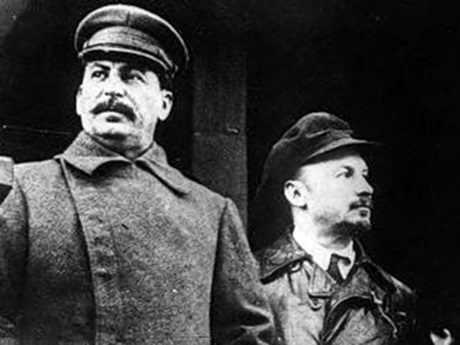 The Stalinist bureaucracy had to launch a one-sided civil war against Lenin’s party / Image: public domain
The Stalinist bureaucracy had to launch a one-sided civil war against Lenin’s party / Image: public domain
To answer these questions, we must return to the facts. The most general cause of the bureaucratic degeneration of the USSR was isolation of the revolution over years in an economically and culturally impoverished and backward nation, under siege by imperialism, which carried out direct military interventions for three years after 1917. This isolation was confirmed by the failure of the revolutionary wave that shook the whole of Europe in the years immediately following: in Germany, Finland, Italy, Hungary, Bavaria, Spain, etc.
The main causes of these defeats were the treachery of the social democracy, which remained a mass force after turning leftward in words, and the youthful inexperience of the new communist parties that were being hurriedly formed but which failed to take advantage of the situation. This isolation lay at the root of the internal regression in the USSR, alongside the weariness and hardship of the working masses. As the latter gradually withdrew from political activity, their place was progressively filled by the apparatuses of the party and soviet state.
Far from the social contradictions in the USSR attenuating therefore, all of the above greatly exacerbated these contradictions. Far from relaxing, the power of the workers’ state was strengthened to extreme levels in order to prevent the disintegration of Soviet society. The dominant faction in the state apparatus and the Russian Communist Party had lost faith in the world revolution, and in the ability of the European working class to make revolution. As they established an increasingly bureaucratic control over the Soviet state and economy, they adopted a nationalist and conservative point of view. This was the faction headed by Stalin.
While the fundamental features of a socialist economy were maintained – i.e. collective ownership and planning – the workers’ democracy of the early years of the USSR that existed, during Lenin's lifetime, was crushed. The Soviet leaders adopted the standpoint of maintaining the status quo with the world bourgeoisie. The USSR became an end in itself, rather than a lever to advance international socialist revolution.
However, the process of bureaucratisation in the USSR was neither automatic nor inevitable. The ruling faction purged the ‘left wing’ of the Communist Party led by Leon Trotsky, which demanded a return to revolutionary internationalism. The Stalinist bureaucracy had to launch a one-sided civil war against Lenin’s party, and in the course of the great purges, it eliminated the entire leading cadre of the Bolshevik party that had led the revolution in 1917.
The degeneration of the Communist International
The bureaucratic methods of leadership and mediocrity of the new ruling caste were expressed on the political plane in terms of analysis, orientation and actions both within the USSR and across the Communist International. Foresight, and a consistent socialist and internationalist policy were replaced by impressionism, opportunism and the defence of the narrow nationalist interests of the Russian bureaucracy. The result was a continuous political zig-zagging between left and right.
Using the authority that the Soviet regime enjoyed among communists in all countries, the Russian bureaucracy manoeuvred to prevent any democratic debate within the International on the factional struggle that arose inside the USSR after Lenin’s death and on all the momentous political developments that took place over the following decade.
The false policy established by the Communist International in each country led inexorably to bitter defeats from 1923 onwards: in Germany, China, Britain, Bulgaria, etc. In order to preserve their prestige and authority, the Moscow leaders blamed these defeats on national leaders, who they accused of misapplying the political line. Thus began the policy, first introduced by Zinoviev when he was in alliance with Stalin, of bureaucratically deposing and appointing national leaderships from Moscow without any democratic debate in the communist parties of each country. This neutered the development of political cadres trained through struggle, political debate and honest assessment of the parties’ policies. This bureaucratic mentoring of national communist parties continued with the beheading of parties under leaderships that escaped the control of the Moscow bureaucracy or that dared to question its policies.
As regards political and theoretical questions, as early as 1924 the leadership of the CPSU under Stalin promulgated the anti-Marxist theory of “socialism in one country”. According to this theory, it would be possible for the isolated Soviet Union to reach socialism through its efforts alone – an impossibility, as developments showed.
Socialism presupposes a level of productive and technological development, and social welfare superior to that of the most developed capitalist nation. This is precisely the historical justification for socialism. Furthermore, connected to this, socialism implies the gradual withering away of the state and of repression of all kinds, in flagrant contrast with the terrible bureaucratic and totalitarian regime imposed in the Soviet Union.
This policy would have far-reaching consequences for the national communist parties. If the USSR could build socialism without the need to extend the socialist revolution internationally, the primary task of the communist parties in each country would no longer be to advance their own socialist revolution, but to manoeuvre with their national bourgeoisie in order to prevent the economic and diplomatic suffocation of the USSR, which as the first and only workers’ state had to be preserved at all costs.
More than this, each communist party could lay down its own ‘national road to socialism’ without the need for solidarity and international class struggle. Leon Trotsky brilliantly predicted that this would lead to the national-reformist, social-democratic degeneration of the communist parties in all countries. And this is what eventually happened. This became fully evident by 1933-34 with the policy of Popular Fronts. This policy promoted collaboration with a non-existent ‘democratic’ bourgeoisie, and restored the ‘two-stage theory’ that the Mensheviks had advocated during the Russian Revolution. According to the latter theory, the first stage of the revolution would involve collaboration with the ‘democratic’ bourgeoisie against the remnants of feudalism in order to establish an advanced capitalist republic. Only after that, at an unspecified later date, would the struggle for socialism be posed.
Impressionism, the status quo, and the liquidation of the Communist International
The impressionist method of analysis led, as already mentioned, to continuous zig-zags to the left and right. These served to miseducate and disorient all the young communist parties internationally. The first shift – to the right – took place after Lenin’s death. In this period, the Soviet bureaucracy favoured capitalist accumulation in the Soviet camp, and they scorned the “industrialising” programme of the Left Opposition. Internationally, it was a period of appeasing the trade union bureaucracy in the West, and of the bourgeois Kuomintang in China. The result was terrible defeats for the workers.
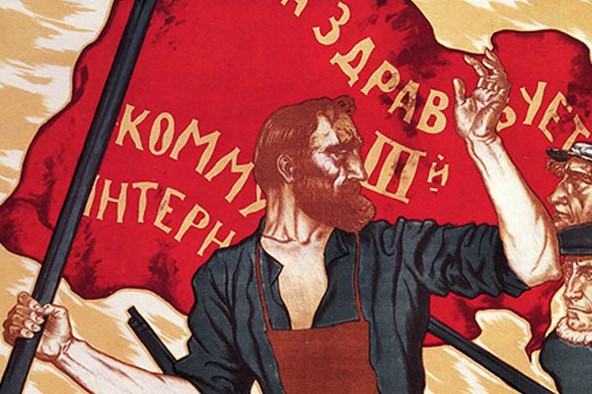 The policy of the United Front, approved at the Third Congress of the Communist International, was thrown into the dustbin / Image: public domain
The policy of the United Front, approved at the Third Congress of the Communist International, was thrown into the dustbin / Image: public domain
In the late 1920s, terror-stricken by how powerful the rich peasants (kulaks) had become, the Moscow bureaucracy took a sharp turn towards wild ultra-leftism. You saw the forced collectivisation of the Soviet countryside, which had catastrophic effects on agriculture, leading to famines; and the so-called ‘Third Period’ policy, which was supposed to be the final phase of the struggle against capitalism, in which all other tendencies in the workers’ movement (Trotskyists, anarchists, social democrats, syndicalists) were denounced as enemies and counter-revolutionaries.
The policy of the United Front with other mass organisations of the labour movement, approved at the Third Congress of the Communist International, was thrown into the dustbin. This crazy ultra-left policy ended in the disaster of Hitler’s seizure of power in Germany in 1933, as the refusal of the leaders of the German Communist Party to propose a united front of struggle against the Nazis to the Social Democrats allowed Hitler to come to power without serious opposition from the German working class, which was paralysed by its parties.
Finally, once Stalin had burnt his fingers with these policies, and fearing a war with Nazi Germany, he gave way to a new turn to the right. He declared a new epoch of ‘Popular Fronts’ – i.e. alliances between the workers’ parties and ‘democratic’ sectors of the bourgeoisie against fascism, at the price of paralysing all revolutionary action by the proletariat in those countries where it was applied.
The Popular Front, despite its appearance, has nothing to do with the Leninist policy of the proletarian United Front. Quite the contrary. The Leninist policy of world socialist revolution was supplanted by a policy of maintaining the status quo with the ‘democratic’ powers of European capitalism, a policy that remained in place until the USSR’s demise decades later. Crowning this policy was Stalin’s decision to dissolve the Communist International in 1943 “as a gesture of goodwill” towards his allies in the ‘democratic’ capitalist countries in the midst of the Second World War.
Why did the USSR fall?
Despite the totalitarian character of Stalin’s regime, the collective ownership of the means of production and the planning of the economy enabled the USSR to develop the productive forces and make colossal progress over the following decades. By the early 1970s, the USSR had developed a sophisticated modern economy. The effects of extreme bureaucracy and the absence of democracy and workers' control, however, had begun to become clear. Economic growth had lost steam and was plagued by inefficiency, waste and corruption. By the early 1980s, a state of economic collapse loomed.
This provoked a struggle within the apparatus and the emergence of a pro-capitalist wing (represented by Yeltsin) that set out to end economic planning and reconvert the ruling bureaucracy into a new capitalist class, which would appropriate the wealth of the people, as indeed occurred in the early 1990s. A similar process was reproduced in Eastern Europe. Such was the ignominious end of the USSR and the historic defeat suffered by the world proletariat with the fall of the first (albeit degenerated) workers’ state in history.
The communist parties in the West formally broke with the USSR and Stalinism in the 1960s, but instead of adopting a revolutionary policy, they simply adopted a totally reformist policy, as we saw for example during the French general strike of 1968 and the revolutionary movement of the ill-named ‘Transition’ in Spain. In reality, they are no different, in terms of tactics and programme, from any social-democratic party.
Theoretical generalisations, and their conclusions, must come from an attentive and exhaustive study of reality, and not be imposed on it. It was not a misapplication of Marxist theory, a misreading of Marx’s Capital, the mistaken seizure of power or the evil genius of Stalin that caused the degeneration and fall of the USSR. Rather, it was concrete material factors, both objective (the isolation of a socialist revolution in a backward country) and subjective (the betrayal of social democracy and the absence or weakness of mass communist parties in the midst of the European revolution).
[We shall continue to publish further parts of this debate in the coming days and weeks.]

